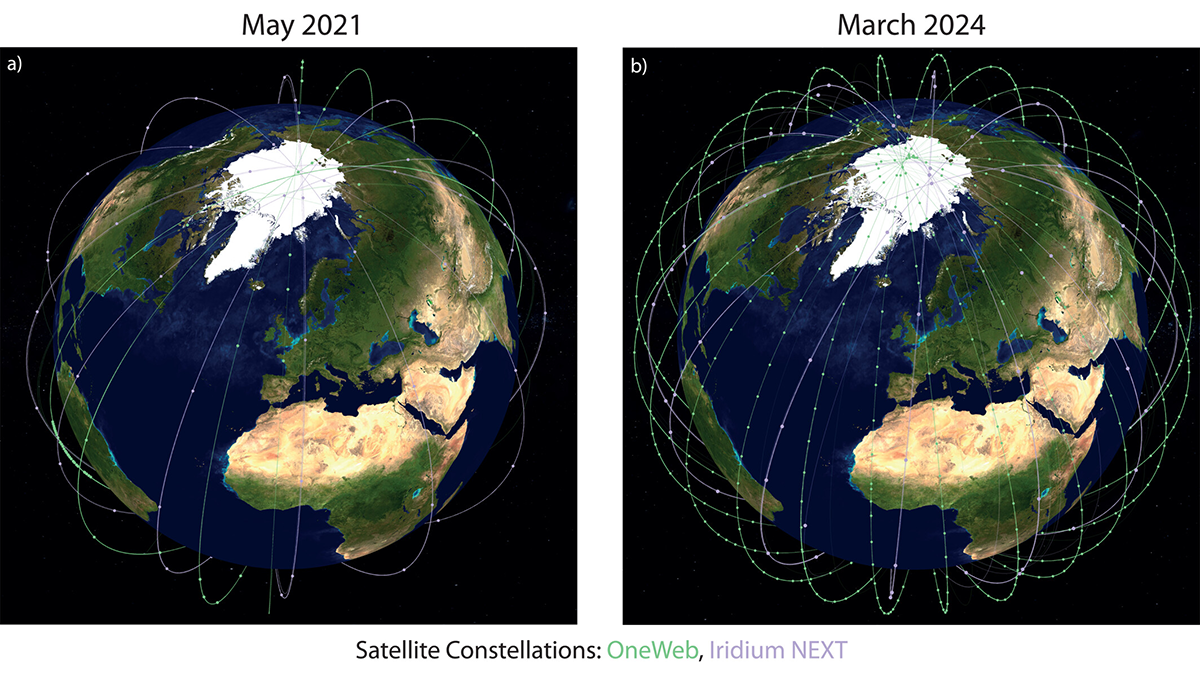Editors’ Highlights are summaries of recent papers by AGU’s journal editors.
Source: Space Weather
Space weather impacts caused by interplanetary disturbances of solar origin, such as coronal mass ejections, are coupled to Earth’s ionized upper atmosphere by electric currents travelling along magnetic field lines (field-aligned currents). These have historically been difficult to routinely measure with high spatial resolution of global coverage, with the best global monitoring to date from the AMPERE project, driven by IRIDIUM-Next telecommunications satellite data (drawn from six orbital planes).
In recent years, the number of satellites in low-Earth orbit has increased significantly; the OneWeb constellation has seen over 1,300 additional launches from 2019 to 2024. This recent mega-constellation uses 12 orbital planes, with a tighter distribution of satellites along each orbital plane.
By using the engineering data from these satellites, Archer et al. [2025] demonstrate that this data set can be used to derive global field-aligned currents at unprecedented resolution, showing that non-science grade instrumentation and commercial satellites have enormous potential scientific utility. The work performed here also highlights the challenges that need to be addressed with industry partners if the scientific community is to enable further advances with these platforms, and in turn provide datasets for space weather research and operations applications, helping protect critical infrastructure.
Citation: Archer, M. O., Evans, V., Eastwood, J. P., Camus, L.-A., Waters, C. L., Brown, P., & Armogathe, F. (2025). First detection of field-aligned currents using engineering magnetometers from the OneWeb mega-constellation. Space Weather, 23, e2025SW004573. https://doi.org/10.1029/2025SW004573
—Steven K. Morley, Editor, Space Weather

